
Advances in Pediatric Research
Open Access
ISSN: 2385-4529

ISSN: 2385-4529
Research Article - (2022)Volume 9, Issue 6
Play is essential in child development. Children have the instinct to play, and they also learn from play. Learning through play can be both spontaneous and intentionally designed. Spontaneous learning through play is associated with motor skills, social-emotional learning, and cognitive development, while intentionally-designed play can be related to academic knowledge and skills. The recent trends emphasize meaningful tangible play, emphasizing the physical play among children to learn different disciplines.
Both educators and designers are involved in designing meaningful tangible play for children. Several factors contribute to successful design, including creativity, techniques, knowledge base, inspiration resource, and empathy with children. While educators have a knowledge base in child development and everyday interactions with children, designers have a knowledge base in design methods and techniques and design resources and tools. Both groups lack some knowledge and skills to design successful and useful products. Thus, this paper proposes an application to help both groups build knowledge and skills by inspiring them to discover inspiration sources in their daily lives and to enhance positive interaction and information exchange between the two groups.
Play for learning; Tangible play; Child development; Idea generation; Creative process
Children’s play and learn
Play is an essential part of children’s life. On the one hand, children have the instinct to play. Studies show that between 3% and 20% of young children’s time and energy are typically spent in play [1]. Educational scholars and psychologists have been studying children’s spontaneous play throughout history. Piaget developed a framework of stages of cognitive development and described the associated play and activities: 1) Sensory-motor period (0-18 months)-the child engages in sensory play. 2) Preoperational stage (18 months-6 years)-the child engages in symbolic play and can perceive and imagine. 3) Concrete operational stage (6-12 years)-the child engages in problem-solving play, which involves classification and rules. 4) Period of formal operations (12 years-15 years) Play becomes more social and refined, and children are engaged in abstract thoughts and play [2].
On the other hand, play could support children’s spontaneous learning, such as cognitive development, social-emotional learning, motor skills training, etc. Early childhood education research has emphasized the importance and benefit of play in early childhood education [3]. Claiborne and Drewery show that children learn language-speaking [4], following play rules such as taking turns to speak. During middle childhood, children are involved in the more complex play, and play becomes vital in all aspects of child development: It includes
1. Social and Emotional Competence: during pretense play, children practice their power to self-direct, self-organize, exert self-control, and negotiate with others.
2. Cognitive development: children exercise their executive skills, develop visual-spatial imagery, and develop a sense of humor through play.
3. Imagination and Creativity: children dramatize roles and scenarios and imagine the future and surreal world through pretense play [5].
Learning through play could also be intentionally designed, resulting in the development of an entirely theoretical and practical approach to pedagogy, known as the pedagogy of play [6]. The constructionist theory and the maker movement encourage designers to “make” things to let children make and construct. Lego Education is an example of pedagogy of play. Each toolkit of Lego Education consists of a classical LEGO brick set and various LEGO elements for students to build and construct. Through construction, children understand the mechanics of objects and structures of architecture. KiwiCo also provides educational toolkits for children to learn through play. Their toolkits follow The Common Core State Standards and are purposefully designed for immersive and engaging learning through play.
Meaningful tangible play
Many HCI academics have recently focused on tactile manipulation and the physical mediation of digital data [7]. The application of tangible play in education has also become a trend. Take K12 Artificial Intelligence education as an example. Recent AI4K12 (AI for K-12) has witnessed a trend in using a combination of XR and tangible interfaces in learning. Kim proposes an application to connect the physical and virtual world to support learners learning by doing. The testing results show that the combination of physical and digital learning significantly enhances non-engineering major students’ (1) interest in AI, (2) recognition of AI’s importance, and (3) confidence in learning AI [8]. Kasperson develop a tangible user interface for teaching machine learning. It aims to enable K12 students to create their own datasets and train a machine learning model for binary classification [9].
Donald Norman addresses this trend as physicality or ‘the return to physical devices [10], where we control by physical body movement, turning, moving and manipulating appropriate mechanical devices. ’Interaction with the tangible interface is seen to be more natural and preferable to a cognition-driven approach associated with personal computing paradigms [11-13]. Besides, tangibles are linked to more effective interaction and can stimulate social interaction and sharing [7]. Concerning the field of education, tangible play enhances learning by creating playful experiences. Numerous existing easy-to-use resources could enable the design and development of such tangibles, such as ReacTivision and BoofCV libraries, which are useful for novices to create innovative tangible interfaces, combining physical and digital play. The trend and the techniques can be informative resources for educators and designers.
The problem
Educators lack background in design and designers lack background in child development: Many people are involved in the process of designing experiences for children’s learning or designing learning experiences through children’s playing. Educators are responsible for designing playful activities and simple toolkits to guide children's learning in classroom settings. In informal learning settings, toy and educational toolkit designers, children’s museum designers, and outdoor installation designers create play experiences for kids.
These two groups of people, whose goals and interests intersect, have disparate educational backgrounds, working experience, and social networks. According to Lobman, Ryan, and McLaughlin [14], high-quality early childhood teacher preparation includes four areas. The first area is the basis of early education, which comprises courses in child development and learning theory, pedagogy, and curricular methodological approaches. The second area is knowledge of the methodology in teaching young children literacy, math, social studies, science, and the arts. The third is to apply knowledge in program planning, considering diversity and cultural backgrounds. Finally, preschool teachers need to have direct experience with young children in various settings. Designing and prototyping activities and toolkits for children is not part of the preparation course.
Different types of designers receive different education. Nevertheless, they are expected to focus intensely on craft skills, whether it is sketching, modeling, detailing, or rendering. As a result, designers have become applied behavioral scientists, but they are not educated enough to understand the task. Designers frequently fail to comprehend the complexities of the challenges at hand and the breadth of knowledge currently available. Fresh eyes might yield insightful results, but they must also be educated and knowledgeable [10].
On the other hand, educators know children and their social interactions the best as they work with children daily. Designers are physically detached from children and their relationships with other people. As such, it creates a problematic situation for designers to understand children’s precise needs and requirements or to generalize children’s behavioral patterns in play and learning.
The two questions addressed in the paper and the application is what knowledge and techniques should educators and designers get to design meaningful tangible play for children and how to make it approachable.
Educators and designers creativity: Creativity has been a trending topic in various disciplines. For half a century, authors such as Rhodes and Torrance stressed the importance and urgency for teachers to be creative. Rhodes claims that creativity comes from unified knowledge, and teachers draw from multi-perspective information for innovative pedagogy [15]. There are two reasons why instructors' inventiveness is so essential. First, instructors are a source of knowledge in the school setting, and they also serve as meaningful role models for their students in tactics and behaviors. They are then responsible for transmitting declarative and procedural knowledge [16]. Teachers are primary mediators of thinking and learning for their students. The creative thoughts and behaviors of creative teachers will influence their students and result in creative thinking in their students [17]. The second is creative pedagogy. Teachers are encouraged to use transdisciplinary methods and knowledge to make learning for children more effective and engaging. Hendriksen proposes seven transdisciplinary habits of mind of creative teachers from an exploratory study of award-winning teachers, including observation, patterning, abstracting, embodied thinking, modeling, and play. In Hendriksen’s analysis, all teachers mention the value of play in making learning fun and engaging. Many instructors emphasized the rising relevance of play in a period of high stakes testing, where children need reminders that learning can be enjoyable and casual. Teachers also mention the value of observational skills, which help them identify the “teachable moments” that are not recognized in teaching situations [18].
Creativity should be a natural part of designers’ work. Designers need to be creative throughout product development, from idea generation to product production. This process consists of being innovative in generating ideas, fixing problems during development, and developing new manufacturing processes. Creativity is especially important when the product needs to be innovative, having features that are not presented elsewhere in the world. Li et al. propose a qualitative model of creativity for product innovation. Essential attributes include knowledge base, information resources, imagination, and creative thinking (Figure 1).
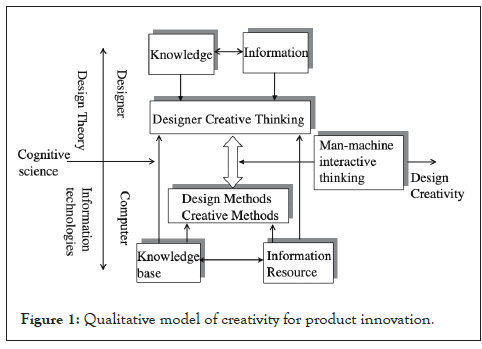
Figure 1: Qualitative model of creativity for product innovation.
As discussed, creativity is an essential and abstract concept. Though many studies try to quantify creativity and establish logical frameworks and models to understand creativity, it still depends on personal experience and intricate mental processes. This paper aims not to understand creativity or create an established way to incite creative thinking but to explore how users could find inspiration in their everyday lives.
The purpose of the paper
First of all introduces the importance of children’s play in their learning, the importance of creativity for designers and educators, and the problem of educators lacking experience in the design discipline and designers lacking knowledge in child development. The next part, analyzes the characteristics of target users, their learning context, and existing solutions to the problem. An application named Play4Learn is designed to inspire the design of creative and meaningful tangible Play for children. Further justification of learning goals and objectives, design decisions, and interaction design is analyzed.
Analysis
Target audience: The target audience of Play4 Learn is two groups of people. (1) Junior product designers working in the education sector, specifically toy designers, children’s museum designers and planners, and children’s toolkits designers. (2) Educators, working in pre-schools and primary schools, who are interested in designing playful learning experiences and activities and simple hand-made toolkits for children.
Characteristics of designers: Designers need to be creative throughout the product development process, from idea generation to product production. This process consists of being innovative in generating ideas, fixing problems during development, and developing new manufacturing processes [19]. For the purpose of the paper and the application, the analysis focuses on designers’ cognitive and affective processes in generating ideas and researching new areas. The analysis consists of both primary and secondary research. I collected quantitative and qualitative data from 10 product designers through questionnaires for primary research. The major frustrations designers encounter are
1. Limited connection with target users (children and educators).
2. Lack of time, experience, and interest in field observation and academic research.
3. Lack of structural knowledge in education and child development (Figure 2).
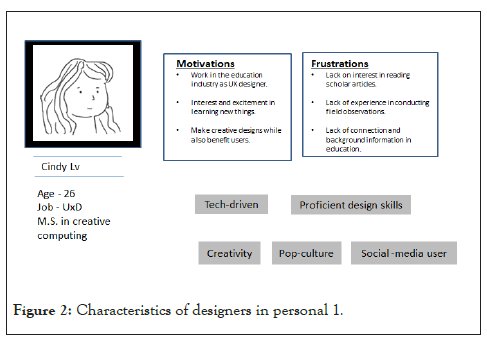
Figure 2: Characteristics of designers in personal 1.
Cognitive characteristics
Fixation: Primary research suggests that experienced designers have a fixed approach to a new area. The process of beginning research starts from conducting secondary online research in combination with conversations with trained experts. After getting a basic idea of the topic, designers create primary research by doing user interviews and surveys as shown in Figure 3a. Besides, designers use similar research and learning methods as shown in Figure 3b. Specifically, during secondary research, designers prefer to browse website articles and analyze competing products. Most designers report a lack of interest, time, and experience in literary research, which is essential when planning a research project and understanding the state-of-the-art landscape to make a valuable contribution to the field [20]. As for primary research, designers strongly prefer user interviews and surveys. Several interviewees mentioned lacking time and connection to carry out field research, which helps gather user requirements, understand user characteristics, and evaluate the design [21]. Scholarly studies also suggest designers become fixated on the designing process and existing design solutions, which prevent designers from being able to generate innovative and creative solutions. Designers tend to follow blind adherence to a set of concepts and ideas, limiting creative outputs and user-centered design [22].
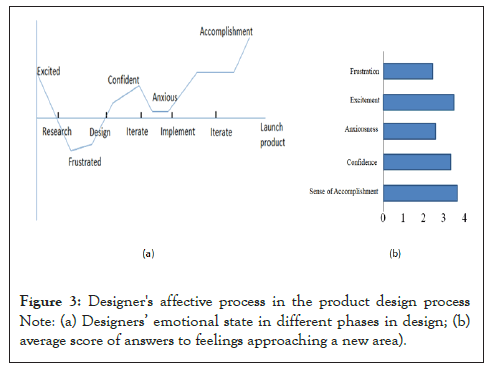
Figure 3: Designer's affective process in the product design process. Note: (a) Designers’ emotional state in different phases in design; (b) average score of answers to feelings approaching a new area).
Idea generation: Scholars study the cognitive process during idea generation. Nijstad and Stroebe propose a model called the search for ideas in associative memory (SIAM) to account for various research findings in group idea generation. The model assumes that idea generation is a recurrent search for ideas in associative memory in two stages (knowledge activation and idea formation). The model also suggests that idea generation is influenced by negative feedback loops and cognitive failures (trials in which no idea is generated) [23].
Novices: Experts studies suggest novice designers and expert designers have different cognitive processes [24]. According to Kavakli, experts' cognitive actions were structured, while novices execute multiple concurrent behaviors that make the ultimate goal unclear [25]. Ho discovered that skilled designers attacked the objective state directly and worked backward for necessary information, but beginners deleted an issue when they failed to manage it [26]. Ball et al. discovered that experts relied on experienced abstract knowledge, but novices relied on case-driven analogies, which were primarily influenced by surface-level signals [27]. According to Ahmed and Christensen, experts used analogies to predict component behaviors and identify problems, but novices transferred geometric features while judging the validity of the comparison [28].
Change of feelings: Designers' affective state changes with the work. When they receive the task, they often feel excited about the new field, expecting to learn something new and interesting. One interviewee says, “Once I get the project, I feel excited because I can achieve something and show the team what I’m capable of.” During the research stage, designers’ emotions are affected by the project timeline and the difficulty. “My feelings depend on the timeline and goal. If the project has a big scope and urgent timeline, definitely will feel anxious because you don’t have time to prepare the research”. Research, design, and iteration often overlap, and interviewees report a lack of interest in research and iteration while more excitement in design. After the product gets launched, designers often feel a sense of accomplishment. “When I finally get it or accomplish a challenging project, I can feel the sense of achievement.” Things to consider in the design are: how to shorten the research process and make the research more relevant and exciting (Figure 3a).
Characteristics of educators: The research of preschool educators mainly focuses on their affective and cognitive processes in designing tangible play for children. Because of limited study in educators’ cognitive and affective processes in designing and making tangible play, the analysis of educators is mainly primary research. I collected quantitative data from 165 preschool educators through questionnaires for primary research. The major frustrations they encounter are
1. Lack of experience and knowledge in design and making.
2. Lack of tools and materials for design and making.
3. Developing teaching plans, evaluating, and teaching takes up all their time (Figures 4 and 5).
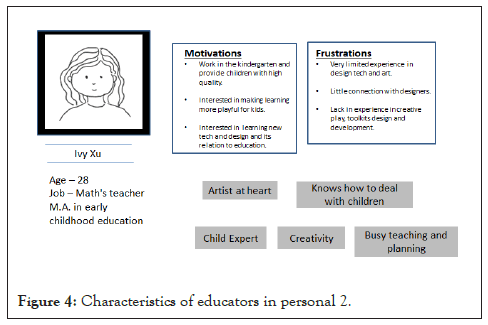
Figure 4: Characteristics of educators in personal 2.
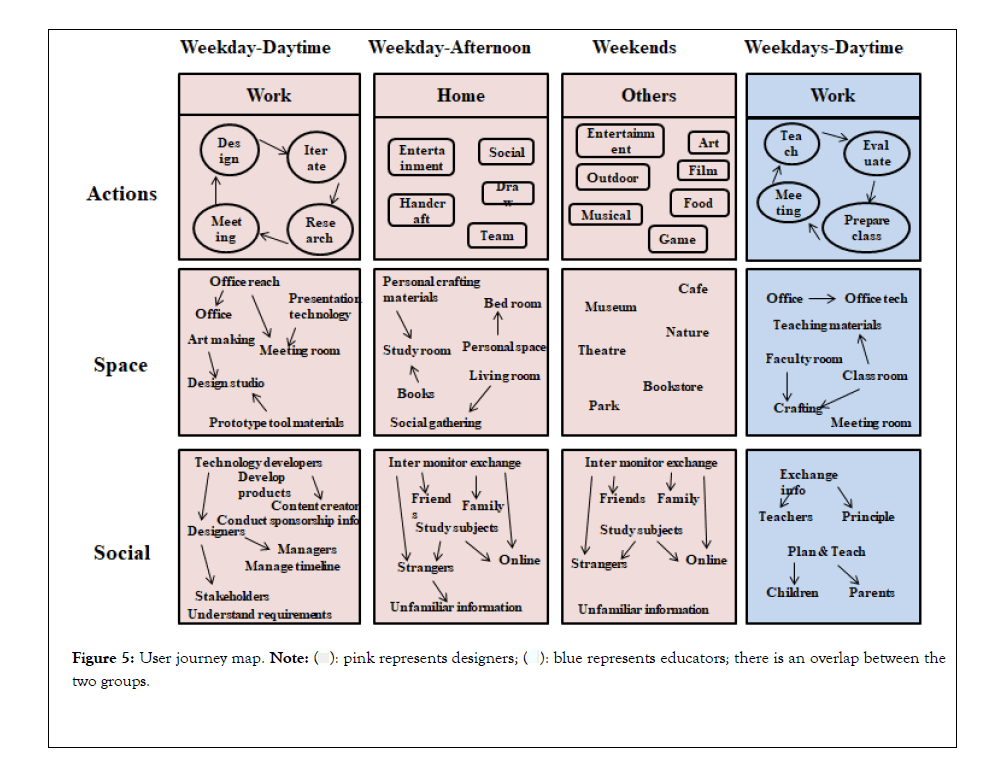
Figure 5: User journey map.  there is an overlap between the two groups.
there is an overlap between the two groups.
Figure 6 shows the visualization of the data gathered from users. Figure 6 indicates that educators have very different interest levels in designing and making, but most of the educators are interested. Their motivation is correlated with age and teaching experience. Older teachers and more experienced teachers are less interested in making, possibly resulting from their lack of time and energy to explore. Figure 6 suggests that educators use all of the four ways to get toys, toolkits, etc. frequently. Searching online is the most common way to learn to make toys while buying existing products is the least common. Educators also do some easy design and work with their colleagues. Lastly, inaccessibility to design and prototyping tools prevent them from designing and making. Interviewees also mentioned they were too busy and they lacked knowledge in design. Besides, they thought that “making such toys and toolkits were too time-consuming and they were not reusable”. In correspondence with users’ needs, the application should provide ways for users to buy design and prototyping tools, circulate their design products, and provide some quick design prompts.
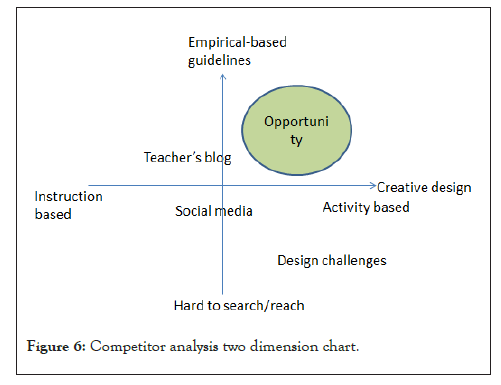
Figure 6: Competitor analysis two dimension chart.
Affective characteristics
Educators are generally excited about learning design and prototyping skills. Over half of the educators are motivated to learn. A significant number of educators also feel it is too difficult to build things because they don't have background and experience. Only 2.9% of the interviewees don’t have interests, but 19% of the interviewees don’t care. When designing and prototyping, most educators feel excited and happy. They are happy about children’s feedback, learning more about new things, and excited about the process. Nevertheless, 15.4% of the interviewees don’t know how to build, and only 2.4% of the educators didn’t have any ideas. As such, the application should provide some guidance on designing and making.
Learning context
The user journey map is generated based on information collected from surveys and interviews. Both educators and designers spend their weekday daytime at the workplace, weekday after-work time at home, and weekends at various places for leisure and entertainment. While their experience at home and during weekends is similar, their experience during work is very different, which is analyzed below.
Spatial: Users can use the app anywhere that they are comfortable. For designers, the place they spend most of their time is the workplace (office, meeting rooms, design studios, etc.), where they have access to office tech tools (Chrome, Microsoft suite, etc.), digital design tools (Adobe suite, 3d modeling, programming, etc.), and possibly physical prototyping tools (laser cutter, woodshop, fabric, and sewing machine, etc.). Educators spend most of their time at school, where they have abundant teaching materials (children’s books, toys, crafts, toolkits, etc.), crafting tools and materials, and office tech tools [29].
As the spaces provide adequate resources for users, the application's design could take advantage of the spatial context. By encouraging and inspiring users to use materials or observe people they can find in their current physical space, users can utilize and explore the advantages of their physical surroundings to customize their learning experience (Figure 5).
Temporal: Users are occupied by work during the day, have personal time at night, and explore different places during weekends. The application could take advantage of the temporal context, serving as a fresh inspiration for users in their daily tedious work and a design tool to inspire them during their design process. It could also serve as a detour from their traditional ways of exploration during weekends, encouraging them to try something different from their routines.
Social: At home and during weekends, users exchange information with friends, strangers in physical space, strangers online, and family. In Particular, they receive unfamiliar and extensive information from strangers. This information could be obtained from conversations, observations, physical contacts, etc. The data could be in different formats (e.g., sounds, smell, text, images, etc.). During work, designers mainly work with design professionals, tech people, and managers, who have different levels of design, development, and managing skills. Educators usually work with parents, children, and other educators and can obtain first-hand information about children’s growth, development, family relationship, and needs.
Taking advantage of the social context of both groups, the application could encourage users to acquire valuable information from various people through different methods as an inspiration source. The application could also encourage positive information exchange through educators and designers.
Competitor analysis
Several dimensions affect the application's success, including but not limited to creative design, approachable empirical-based framework, low threshold design methods learning, user motivation, and social interactions. The analysis focuses on the two most important aspects: creative design and an approachable empirical-based design framework. For innovative design, instruction-based learning focuses on following instructions to learn design and prototyping skills [30], while problem or activity-based learning focuses on directing users to solve problems following their own directions. Creative design is often open-ended and ill-structured, so problem-based and activity-based learning are preferable because it promotes flexible solutions, hands-on practices, and self-directed learning [31]. Because the empirical-based framework is for both designers and educators to read and digest, it should be accessible, concise, and relevant. As discussed, the competitors fall into three categories: social media, creative blog, and design challenges, and are analyzed centered on the two dimensions mentioned above (Figure 6).
Social media
Social media allows people to browse abundant information without time and location constraints. According to a study in 2014, an average of 55 million photos were uploaded by users on Instagram per day, and more than 16 billion photos were shared till 2013 [32]. As mentioned in interviews and surveys, Youtube, Instagram, and Xiaohongshu (the Chinese version of Instagram) are frequently used by educators and designers as sources of inspiration, learning tools, and information searching tools. Numerous play-based teaching and designing resources, such as crafting methods and materials, and play activities, can be found on Instagram (e.g., @twinklaustralia, @mrsalbanesesclass, etc.). Educators, scholars, and organizations post easy-to-understand instructional videos about children’s play and cognitive development on Youtube (@Professor LaMarr, @ECEPT, etc.). Though providing users with abundant information, the learning experience is instruction-based, and information searching is difficult. Social media users receive an endless stream of information, often at speed much higher than their cognitive processing capacities. Information overload on social media poses a problem for learning productivity [33].
Creative blog
Creative blogs target teachers and designers specifically. These websites provide resources that have been tested in real-teaching settings. Two types of blogs are helpful. First is designers’ and educators’ blogs. Take myteachingcupboard, for example. Myteahingcupboard is a personal blog by Janelle – an experienced Queensland Prep and Year One teacher who implements a balanced curriculum in an engaging and play-based environment. She provides users with paid and free teaching resources such as makerspace display packs, tinkering displays, reading cards, etc. She also posts her interpretations of scholarly articles and empirical-based learning theories. The second type is blogs by small teams and large organizations. These blogs are organized by a group of people in different disciplines, including scholars, educators, designers, and developers. They provide richer sources and more structural information. An example of such a blog is Foldmecha, a platform where a team shares their research on design tools and techniques for mechanical movements combined with paper crafting. These blogs provide more relevant information, specifically focusing on play-based learning for children.
Nevertheless, the learning is still instruction-based, unhelpful for users to connect to their prior knowledge and their teaching and designing scenarios.
Design challenges
Design challenges are daily prompts to inspire designers to experiment with designs. Daily UI is a platform that provides daily UI design challenges to inspire and challenge designers around the world. As mentioned on their website page, users have positive comments on their website experience. The prompts help them practice, research, discover, improve, experiment, play, and work hard. The problem-based learning enables users to self-direct their learning paths, test out different designs, and get hands-on practice. Nevertheless, it fails to give users a theoretical background in design and user research.
Content analysis
Goals and objectives are analyzing target users, learning context, and competitors, the application's goals include:
1. Inspire users to generate creative ways to understand children and design for children.
2. Help designers and educators connect creative ideas into realworld designing contexts.
3. Provide users with an empirical-based guide for developing creative tangible play for learning.
The objectives are specified using the KSA (knowledge, skills, attitudes) model by Quinones and Ehrenstein. Knowledge refers to the condition of being aware of something (facts and concepts), skills are the abilities to perform intended tasks, and attitudes refer to the feelings, beliefs, or values about something [34].
Detailed content
The explicit content is two parts. The first part is the design prompt, which motivates users using design thinking and user research methods to generate creative design ideas and exchange design techniques for play-based learning (This part should fulfill objectives #2 #3 #5 #6). The second part focuses on providing updated and structural scholarly information on children’s play and learning during different ages and in different learning settings (This part should fulfill objectives #1 #4 #5)..
Design prompt
The design prompts follow the design thinking discourse summarized by Johansson-Sköldberg, Woodilla, and Çetinkaya [35], including the creation of artifacts [36], a reflexive practice [37], problem-solving activity [38], reasoning/making sense of things [39,40], and creating of meaning [41]. These different discourses do not compete but could be developed in parallel. These discourses could be used to generate inspiring prompts.
The design also considers the idea-generation techniques summarized by Smith. Here I outline some methods that are most relevant for the application.
The prompts will follow the guidelines of design thinking and idea generation techniques. At the same time, the prompts will also focus on the everyday life of the users, from the appropriation of artifacts and surroundings as design resources to understanding the design-in-use of the systems (Tables 1 and 2) [42].
| Categories | Tools for consideration |
|---|---|
| Knowledge | #1 Structural understanding of children’s play and child development |
| #2 Design tools, materials, and strategies that create meaningful tangible play for children | |
| Skills | #3 Document daily inspirations for design and teaching |
| #4 Apply creative design thinking to real-world scenarios | |
| Attitudes | #5 Recognize the advantages of field observation and scholarly research |
| #6 Motivated to learn from and be inspired by the dynamic nature everyday life |
Table 1: Examples for each design thinking practice.
| Categories | Considerations |
|---|---|
| Relationship search | Look for relationships between two or more things. |
| Structure | Organize information to reveal relationships. |
| Boundary stretching | Explore extreme values of variables in the situation. |
| Rearrangement | Change the structure of a situation by rearranging its parts. |
| Context inclusion | Think about the environment within which the problem exists. |
| Compare and contrast | Compare ideas with the status quo to find points of advantage. |
| Bootstrapping | Analyze alternatives to generate new families of possibilities. |
| Circumstances | Think of circumstances in which an idea might be effective. |
| Dialectic | Conduct a debate between opposing sides on an issue. |
| Outside sources | Solicit ideas from outsiders and established idea sources |
| Personal experience | Involve the problem solver experientially in the situation. |
| Changing environment | Mentally or physically leave one’s normal thinking environment. |
| Concrete stimuli | Use physical things or pictures in idea generation sessions. |
| Mass production | Try to generate lots of ideas. |
Table 2: The planning of one prompt.
Design documentation
Information structure: The application's information architecture is shown below. The application contains three major components, including daily design prompt, an inspiration collector, and a design guide. Each of the three components fulfills one of the goals of the application. The daily inspiration aims to incite users’ creative thinking process and create their own path to learn design tools and strategies (objective #2 #6), the inspiration collection serves as a documentation of users’ creative ideas as a reference for future applications (objective #3 #4), and the video/article aims to provide a structural understanding of child play and child development (objective #1 #5) (Figure 7).
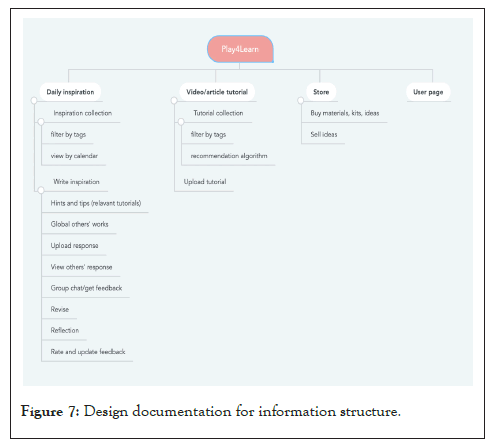
Figure 7: Design documentation for information structure.
Prototypes and feature analysis
Daily design prompt: Take a break. At times of frustrations and impasse, designers sometimes take a break from the cognitive process to do something else, and when they return to the idea-generation process, new ideas start to emerge [43]. Wallas formalized the four-stage model of the creative process. The first stage requires analysis and understanding of the problem. The second stage is incubation, which is no conscious mental work on the problem. The third stage is illumination, where sudden enlightenment happens, and the final stage is verification, which involves evaluating and refining the ideas [44]. Though the information that is more obviously similar to the problem influences idea generation more before design begins, information that is distantly related to the design problem incites creativity more in an open-ended design problem. When designers and educators are immersed in the thinking process [43], it is beneficial to set back and get some fresh air.
Design idea 1: Gives the daily prompt during users’ routine working process, helping them take a break from cognitive processes.
Inspiration source and maker culture: All conscious uses of prior designs and other resources as references for the solution to the current challenge are referred to as 'inspiration sources.' The term ‘inspiration sources’ refers to all conscious uses of previous designs and other resources as the references for the solution to the current problem. Basic geometrical shapes, works of art, objects, and occurrences from nature and everyday life, abstract literature, architectural precedents, design sketches, diagrams, and technical drawings such as plans and sections, may all serve as sources of inspiration [45].
DIY making has also been a trend: From experimenting with various materials (e.g., electronics as much as fabrics, wood, plastic, paper, etc.) and techniques to transforming DIY products toward entrepreneurialism and professionalization [46]. To better motivate users to generate creative ideas, the application should afford to provide users with access to various materials, inspiration ideas, and ways to share and sell their ideas.
Design idea 2: Users can buy materials through the app store and sell their designs in the store.
Collaboration: Collaboration also facilitates creative thinking and idea generation. During the collaboration phase, people gather valuable information from others. One key influence is how thoroughly group members process the ideas exchanged in the group (attention). Another benefit is the chance for group members to reflect on their thoughts following the exchange process (incubation) [47]. Studies also suggest the hybrid structure, in which individuals first work independently and then work together, generating more ideas, generating better ideas, and better evaluating them [48].
Design idea 3: Users first work independently and work asynchronously together after submitting their ideas for the first round. After closing the question, users can also exchange their design experience as a whole.
2. How to help people with multi-level expertise explore design tools and materials?
Inquiry-based and project-based learning: Users have different levels of experience in design and prototyping. Besides, the focus of the application is not to learn design and prototyping but instead serves to inspire users. Ideally, users could learn techniques and tools in the application and self-explore the tools elsewhere, following their learning speed and flow. For this purpose, inquiry-based learning is suitable for the design because it encourages self-directed learning, self-exploration, and flexible application of knowledge into the context [31]. Learners of different levels of experience can plan their learning path, search for external information about design and prototyping on their own, and set different goals.
Design idea 4: Encourage positive interaction between designers and educators. Have a resource page that provides users with an intro video and resource links.
3. How to support the different informational/knowledge needs of the two target audience in a way they can acquire and apply new knowledge in the daily inspiration challenge?
Context-based learning and observational learning: Designing for children require both a theoretical knowledge basis of how children learn what should children learn, and what do children like to play. Thus, users should understand how children learn and play in a way that incorporates this knowledge into real-world practices. To achieve this, the design requires context-based learning and observational learning. Context-based learning, as well as situated learning, emphasizes learning in real-life contexts using practical activities to ensure that knowledge learning is rationalized and meaningful [49]. Observational learning, on the other hand, refers to learning by watching [50]. These two learning methods are especially effective when learning procedure skills and learning to put knowledge into real contexts.
Design idea 5: Provide tutorials that are relevant to the current context of the problem to help users generate ideas. Provide others’ works to inspire users.
Feedback
Another critical learning experience in designing is feedback. Users should receive feedback from both the other groups (educators receive feedback from designers and designers receive feedback from educators) to improve their design skills over time further. Users should also receive feedback from the end-users of their design, namely the children and students.
Design idea 6: Encourage the two groups to provide their feedback on each other’s design. The application should also encourage users to test their design with kids and document children’s feedback on their design.
Storyboard
There are two scenarios of using the app. The first scenario is answering the daily design prompt during the work break. Users get notifications of the daily prompt, read the prompt, think about their design, explore and learn new methods and techniques, read others’ answers and posts, improve their design, finalize the design, and sell their ideas. The second scenario refers to past designs and the framework when facing a design situation in a real-world context (Figure 8).
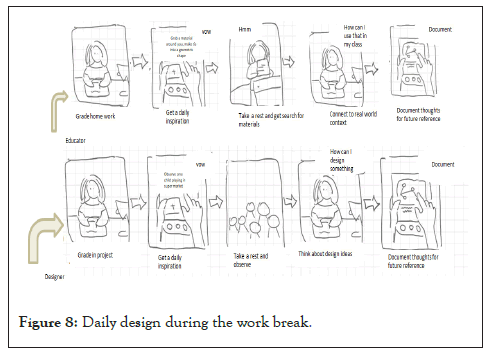
Figure 8: Daily design during the work break.
Evaluation
In any designed artifact, evaluation is an important design consideration. To ensure that users are meeting the goals and objectives while using the application, the application will give a monthly report to evaluate the six learning objectives. Play4Learn will also analyze the sequential data to give suggestions for using the application.
The report will use appropriate methods for evaluation based on the framework provided by Brown and Green (Figure 9) and (Table 3).
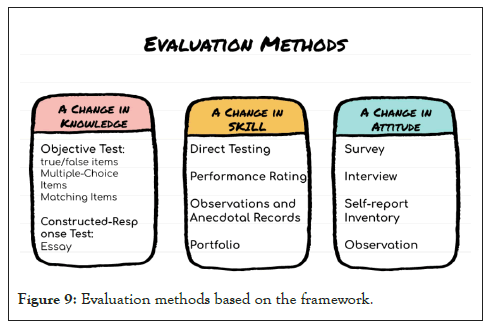
Figure 9: Evaluation methods based on the framework.
| Categories | Considerations |
|---|---|
| Objective (knowledge) | 1 Structural understanding of children’s play and child development |
| Evaluation | The report will randomly post some questions about the videos and articles they have read or watched in the past month and evaluate their understanding. The report will also evaluate how much knowledge they use in their daily design challenge. |
| Objective (knowledge) | 2 Design tools, materials, and strategies that create a meaningful tangible play for children |
| Evaluation | The report will provide a survey for users to evaluate the design tools and materials they have used in the past month, and rate their improvements. |
| Objective (skill) | 3 Document daily inspirations for design and teaching |
| Evaluation | The report will generate a calendar about how many days they have skipped the design challenge and ask for their reasons and satisfaction level. |
| Objective (skill) | 4 Apply creative design thinking to real-world scenarios |
| Evaluation | The report will provide a survey for designers to evaluate how useful is the daily challenge for their teaching, and whether the experience using the application help with their daily teaching and designing. |
| Objective (attitude) | 5 Recognize the advantages of field observation and scholarly research |
| Evaluation | The report will evaluate how many daily challenges related to field observation and scholarly research they have done |
| Objective (attitude) | 6 Motivated to learn from and be inspired by the dynamic nature everyday life |
| Evaluation | The report will provide a survey for designers to evaluate how much they think about their everyday life differently, and whether the application provides them with new perspectives to view everyday routines. |
Table 3: Monthly evaluation report.
Due to limited space and time, several parts of the application are not described clearly. Only the daily inspiration part is well-designed with precise logic, while the other parts remain undeveloped. I will continue working on the other four pieces to make the design functional. Another design limitation is that users have not tested the prototype, so the visual and physical interactions might not be user-friendly. I will develop the prototype and content for further work and test it with potential users for feedback.
[Crossref] [Google Scholar] [PubMed]
[Crossref] [Google Scholar] [PubMed]
[Crossref] [Google Scholar] [PubMed]
[Crossref] [Google Scholar] [PubMed]
[Crossref] [Google Scholar] [PubMed]
[Crossref] [Google Scholar] [PubMed]
Citation: Dong J (2022 Education to Improve Public Health: An Application that Inspires the Design of Creative and Meaningful Tangible Play for Children. Adv Pediatr Res. 9:046.
Received: 05-Nov-2022, Manuscript No. LDAPR-22-19961; Editor assigned: 08-Nov-2022, Pre QC No. LDAPR-22-19961 (PQ); Reviewed: 23-Nov-2022, QC No. LDAPR-22-19961; Revised: 02-Dec-2022, Manuscript No. LDAPR-22-19961 (R); Published: 09-Dec-2022 , DOI: 10.35248/2385-4529.22.9.046
Copyright: © 2022 Dong J. This is an open-access article distributed under the terms of the Creative Commons Attribution License, which permits unrestricted use, distribution, and reproduction in any medium, provided the original author and source are credited.